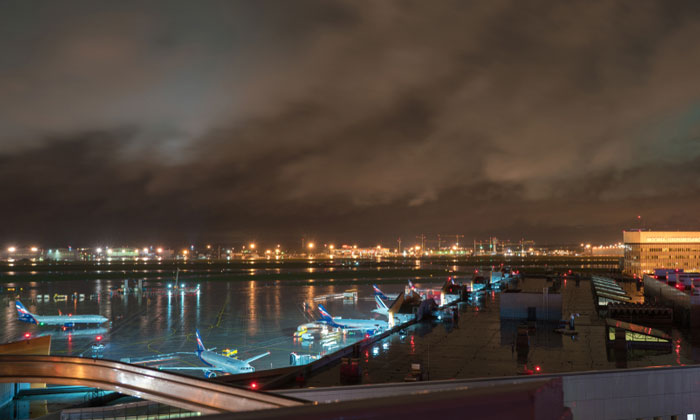Top five fastest growing European airports of 2017
Posted: 6 February 2018 | International Airport Review | 1 comment
This year’s figures have been released showing the popularity of air travel continues its post-crash surge with the top five airports welcoming 18 million more passengers than 2016.


BUMPER YEAR: Georgia saw a 43.7 per cent rise in passenger numbers last year
In 2017, air travel boomed in Europe. Even in the context of a trend towards growth since the crash of 2008 it was an exceptional year, with passenger numbers shooting up by 8.5 per cent. Now the figures are out and we can see just where that growth is coming from .
The biggest upwards trend came from the non-EU airports. On average, these saw an 11.4 per cent rise in passenger numbers, compared with a 0.9 per cent decrease in 2016. Airports in Georgia, Ukraine, Moldova and Iceland grew in excess of 20 per cent, and Russian and Turkish airports enjoyed an impressive bounce back.
Within the Union, passenger traffic showed a 7.7 per cent rise, an improvement over 2016 (+6.7 per cent). The highest growth was achieved by airports in East and South of the EU – with airports in Latvia, Estonia, Poland, the Czech Republic, Slovakia, Hungary, Croatia, Slovenia, Romania, Bulgaria, Cyprus, Malta and Portugal recording double digit growth. This reflects a catching-up pattern in terms lower propensity to fly in most of these countries when compared to the Western and Northern parts of the EU, along with more dynamic local economies.
Join us live: Shaping the Next Generation of Hold Baggage and Air Cargo Screening
Join us live for an insightful webinar on 11th December at 14:00 GMT, in collaboration with Smiths Detection, as we explore the strategic balance of operational efficiency, regulatory compliance, and sustainability in high-volume security environments.
This session offers a focused look into future-proofing your security strategy.
Key learning points
- Cost Reduction: Strategies to minimize bag travel time while simultaneously reducing operational costs.
- Regulatory Roadmap: Insights into the next wave of regulatory changes and their impact on future investment decisions.
- Sustainable Systems: Practical approaches to building sustainability into security systems and lowering the total cost of ownership (TCO).
- Scalable Solutions: Real-world examples of scalable systems supporting current airport growth and preparing for tomorrow.
Register now for expert insights, case studies, and actionable strategies on operational efficiency!
Olivier Jankovec, Director General of ACI EUROPE said: “2017 marks the best year for European airports since 2004, when air traffic was boosted by the accession of 10 countries to the EU – the single largest expansion of the bloc.
“That parallel is quite something when you consider the current climate includes Brexit and all its uncertainties.
“This performance comes on top of several years of dynamic growth and shows that demand for air transport keeps outperforming the economy and defying geopolitical risks – for now. It is quite impressive to see that even in the more mature EU market, passenger traffic since 2012 has increased by close to 30 per cent. Such significant growth is putting much pressure on airport facilities and staff with more and more airports now reaching their capacity limits – especially during peak hours.”
The airport growth rankings are split into four bands depending on their size, with the smallest increasing by an average of 10.9 per cent compared to a more modest 5.6 per cent in the largest.
The big five – airports welcoming more than 25 million
5. Barcelona-El Prat Airport – 7.1 per cent
Spain’s second airport clocked a record 47 million passengers last year, bringing it to within five million of its nearest rival Madrid. Compared with 2015, it was up 19.1 per cent, or nine million passengers.
4. Moscow Domodedovo Airport – 7.6 per cent
Recovering from a slump in growth, Domodedovo is racing back with 30.6 million passengers last year. However, it is only up by 0.5 per cent on 2015, the smallest increase of any 25 million+ airport over the two years and evidence of how slow a year 2016 was for the hub.
3. Amsterdam Airport Schiphol – 7.7 per cent
The biggest airport in this Top 5 list and the third busiest in Europe, Amsterdam’s Schiphol welcomed 68.5 million passengers last year – 17.5 per cent more than its 2015 total. This year’s figures mean that, according to ACI EUROPE, Schiphol has reached its capacity limits and we are unlikely to see it rank so high next year.
2. Manchester Airport – 8.6 per cent
Manchester has grown to nearly 28 million passengers, a full 20 per cent larger than it was in 2015. This was driven, in part, by new routes between destinations such as San Francisco, Muscat, Boston, Riyadh, Granada and Seville, and both Cathay Pacific and Hainan Airlines increasing the regularity of their services to Beijing and Hong Kong to daily.
1. Moscow Sheremetyevo International Airport – 17.8 per cent


By far the largest growth, the second airport on this list saw seven million passengers more in 2017 than 2016, and around 11 million more than 2015 – a 26.8 per cent rise. It is the largest Russian airport in terms of passenger and cargo transportation volumes, serving more than 200 destinations.
Large airports – welcoming between 10 and 25 million passengers
5. Václav Havel Airport Prague – 17.9 per cent
4. Lisbon Portela Airport – 18.8 per cent
3. Esenboğa International Airport Ankara – 20.6 per cent
2. Pulkovo International Airport St Petersberg and Warsaw Chopin Airport – 22.7 per cent
1. Antalya Airport – 38 per cent
Medium airports – welcoming between 5 and 10 million passengers
5. Larnaca International Airport – 16.5 per cent
4. Malta International Airport – 17.5 per cent
3. Boryspil International Airport Kiev – 22.1 per cent
2. Naples International Airport – 26.6 per cent
1. Keflavik International Airport – 28.3 per cent
Small airports – welcoming fewer than 5 million passengers
5. Kaunas Airport – 60.2 per cent
4. Batumi International Airport – 67.2 per cent
3. Craiova International Airport – 100.6 per cent
2. Niš Constantine the Great Airport – 167.8 per cent
1. Henri Coandă International Airport Bucharest – 208.9 per cent
Stay Connected with International Airport Review — Subscribe for Free!
Get exclusive access to the latest airport and aviation industry insights from International Airport Review — tailored to your interests.
✅ Expert-Led Webinars – Gain insights from global aviation leaders
✅ Weekly News & Reports – Airport innovation, thought leadership, and industry trends
✅ Exclusive Industry Insights – Discover cutting-edge technologies shaping the future of air travel
✅ International Airport Summit – Join our flagship event to network with industry leaders and explore the latest advancements
Choose the updates that matter most to you.
Sign up now to stay informed, inspired, and connected — all for free!
Thank you for being part of our aviation community. Let’s keep shaping the future of airports together!
Related topics
Related airports
Amsterdam Airport Schiphol (AMS), Barcelona El-Prat Airport (BCN), Manchester Airport (MAN), Moscow Domodedovo Airport (DME), Moscow Sheremetyevo International Airport (SVO)



















Thank you for the valuable pax growth comparison.
Regarding the BucharestbHenri Coanda Airport, there might be an error b/c the actual traffic growth was less than 20% in 2017.